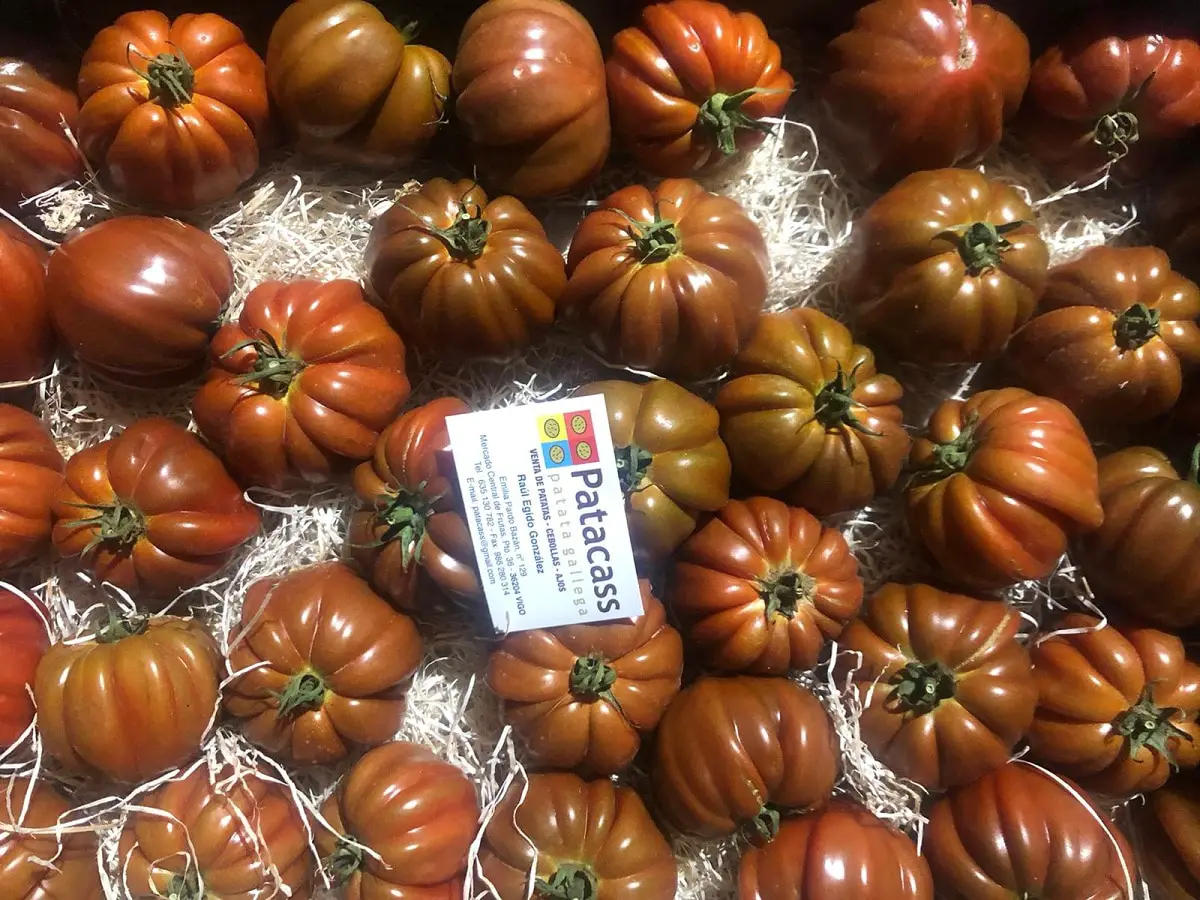

Tomatoes are such a prized vegetable throughout the world that today there are thousands of varieties of different colours, shapes and sizes. There are types of tomatoes that adapt to the climatic characteristics of every corner of Spain. In addition, there is a wide variety of varieties for all tastes and needs. It is an authentic collection with different uses of different qualities: tomatoes for salads, tomatoes for stuffing, special tomatoes for preserves, fried tomatoes, tomatoes for gazpacho, etc. One of the most striking varieties is the moorish tomato.
For this reason, we are going to dedicate this article to telling you about the characteristics and cultivation of the Moorish tomato.
moorish tomato


The Moorish tomato is a true miracle. It is grown in many parts of Spain, although Tomatoes from Aranjuez and Las Pedroñeras are especially well known. We also find limestone mole tomatoes, common in Huete. It is a sweet variety with just the right amount of acidity and juicy flesh. Its skin is thin and firm, and there are few seeds. It has a strong flavor and strong aroma.
Hernán Cortés brought tomatoes from America in the early XNUMXth century. Tomatoes took at least two centuries to enter European pantries and spread as a crop. Since tomatoes arrived in Spain, local farmers have selected the plants that best they adapt to the local conditions of soil, water and temperature. Get the best flavor this way.
Moorish tomato cultivation


Temperature
The Moorish tomato plant is a plant that adapts well to a variety of climates. The exception is frost-prone climates, to which tomatoes are sensitive. In fact, depending on the vegetative development of the tomato, it requires a frost-free period of 110 days without suffering yield losses.
In tomato cultivation, the optimum temperature range is shown in the following figure:
- Night temperature: 15-18ºC
- Daytime 24-25ºC
- Ideal flowering temperature: 21 ºC
- Ideal temperature for vegetative development: 22-23 ºC
- Stop of vegetative development: 12 ºC
- Temperatures below 7ºC are not beneficial.
As you can see, it needs to grow in a high temperature range, with an optimum above 20ºC. If you consult the FAO table on negative temperatures and frosts, you will find that the tomato is one of the vegetables most affected by the cold (for example, peppers, potatoes, lettuce, etc.). Its freezing point is about -0,5 ºC.
humidity and soil
Regarding humidity for tomato planting, tomato plants require moderate humidity, no more than 70%.
If we exceed these values, the growth of fungi is favored.The Moorish tomato is not very demanding on the soil. Prefers deep, well-drained soils. The root system is shallow and the adaptability to poor soils is better. We stick to the features of drainage, because excessive watering, the soil cannot absorb water quickly enough, can cause waterlogging, rotting of the roots, which leads to the development of diseases.
The ideal pH for tomato cultivation is close to neutral (7), which must be corrected with amendments in the case of acid or alkaline soils. These corrections should be done at the same time as soil preparation, not by planting tomato plants in the ground. Regarding the content of organic matter, the minimum percentage of soil content is around 1,5-2%. If levels are low, consider adding organic matter or compost.
Prior tillage to sow the Moorish tomato


Some deep work needs to be done and the background subscriber we mentioned earlier needs to be applied there. not recommended Nitrogen as base fertilizer for tomato planting. It is only recommended if the soil is very poor or if the nitrogen content is very low. Ammonium sulfate levels of 300-400 kg/ha are recommended to correct these deficiencies.
However, it is recommended to incorporate phosphorus into the soil, as it contributes significantly to tomato root development and flowering. An example could be the addition of superphosphate as a bottom fertilizer. For the fruit to develop properly, it needs a potassium-based fertilizer. A value of around 5-10% (cation exchange capacity) in the soil is recommended, so it is recommended to add 400-500 kg/ha of potassium sulfate.
Planting and irrigation
The planting frame when planting in deterministic soil is variable, depending on the space you have available. If you have or want to use very little space, it can be 0,3 m between plants and 0,5 m between rows, or 0,5 m between plants and 0,7 m between rows.
These pots can be reduced, the softer the soil the better, with character. For example, if you install a deeper bed in your organic garden, the planting area will be reduced.
The roots of Moorish tomato plants do not need to dig or search for nutrients, as they always have enough on hand. So there is no competition between crops (or if there is competition, there is little competition). Consequently, the planting frame has increased significantly. Given the high temperatures of summer, tomato plants need constant humidity. Don’t let the ground dry out. Although each orchard is a world, especially because of its geographical area and climate.
Maintenance, pests and diseases
Yes, although you may think of only pruning trees and shrubs, you can also prune grasses to increase yields and balance growth. Pruning in the cultivation of Moorish tomato constitutes a formative pruning, that is, the elimination of lateral stems that are too long, sick, old, etc.
We have pests and diseases typical of the season where the tomato plant is grown, and of the Solanaceae.
Among the pests:
- Red spider (Tetranychus spp..)
- Heliothis (Helicoverpa armigera)
- White fly (bemisia tabaci)
- Miners (Liriomyza spp.)
- tomato moth (Absolutely all)
- Thrips (Frankliniella occidentalis)
And among the diseases:
- Mildew (Phytophthora infestans)
- Oidium (tauric level)
- Gray rot (Botrytis cinerea)
I hope that with this information you can learn more about the Moorish tomato and its cultivation.

